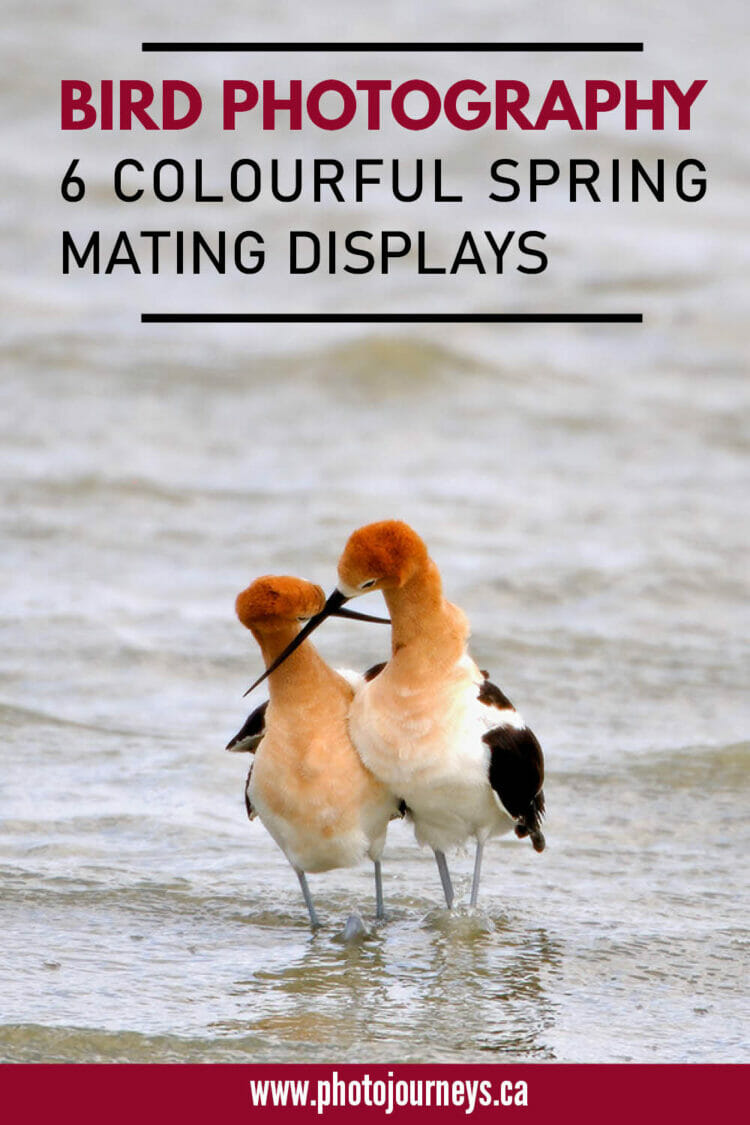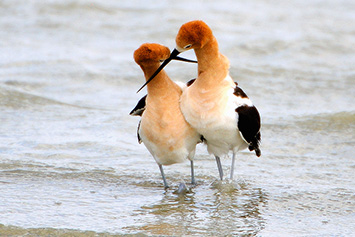
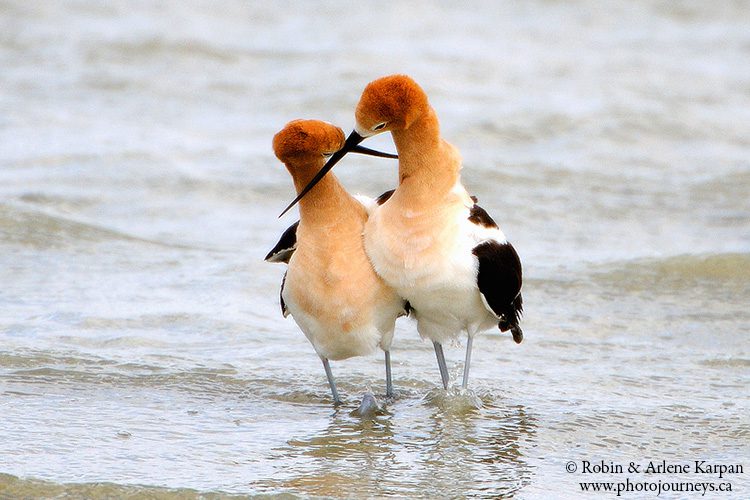
Spring has sprung in Saskatchewan and it’s time to party – at least for birds. Guys try to impress the gals by strutting around in their finest spring attire, showing off, and engaging in mating displays that range from cute to colourful to downright bizarre. Here are six to look for and try to photograph this spring.
The Ruddy duck’s bubbles and belching routine part of mating display
Photographing mating displays can be challenging, so let’s start with one of the easier ones. Fortunately, this is also one of the most intriguing rituals. Not content to simply look attractive, the male ruddy duck also uses bubbles as part of his act. He inflates an air sac in his thick neck then pumps his brilliant, sky-blue bill up and down, whacking the underside of the bill against the inflated neck. This produces a drumming sound as well as an impressive array of bubbles. He finishes by opening his bill and belching. What female wouldn’t be impressed?

In breeding season, we find them mostly in the Canadian prairie provinces and US Great Plains states. The easiest way to photograph this behavior is from a vehicle, which is how we got most of our shots. Drive along backroads lined with wetlands in the spring. When you see a male ruddy duck, especially close to the road, stop and watch for awhile to see if he looks like he’s about to show off. They are quite tolerant if you stay in your car so sometimes it’s possible to see and photograph the action fairly closely.
Fast and furious – Bufflehead ducks
Our smallest diving duck lives primarily in forest areas of western Canada. They nest in tree cavities, such as old woodpecker holes. The male isn’t especially flashy, except in the spring when he turns just the right way and the light catches the iridescent mix of purple, violet, and green on his neck. Part of the mating display is for couples or competing males to half-run and half-fly across the surface of the water, making a big fuss and creating the biggest possible splashes.
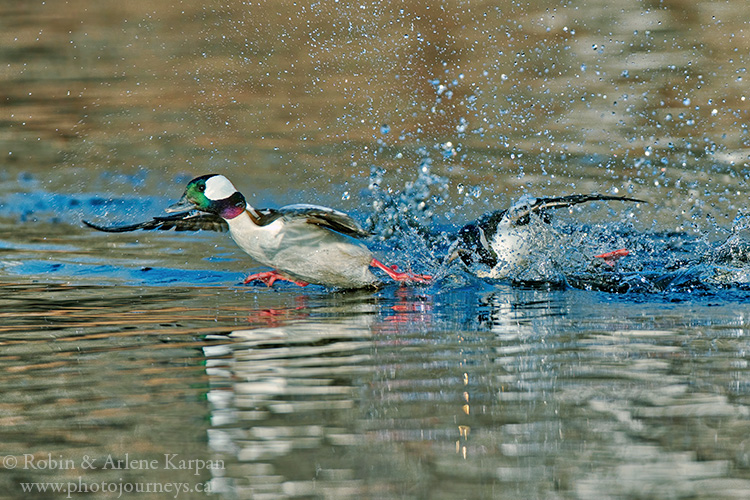
This happens extremely quickly and with little warning, so it’s necessary to be ready and have a high shutter speed if you want to photograph the action. Sometimes these splashing episodes can go on for a few minutes, usually with a few quick seconds of high-speed action, separated by longer periods of resting. While using a blind or photographing from your car is usually best, buffleheads tend to be less skittish than many other ducks. I have taken bufflehead photos while sitting quietly on the edge of wetland where the ducks are swimming.
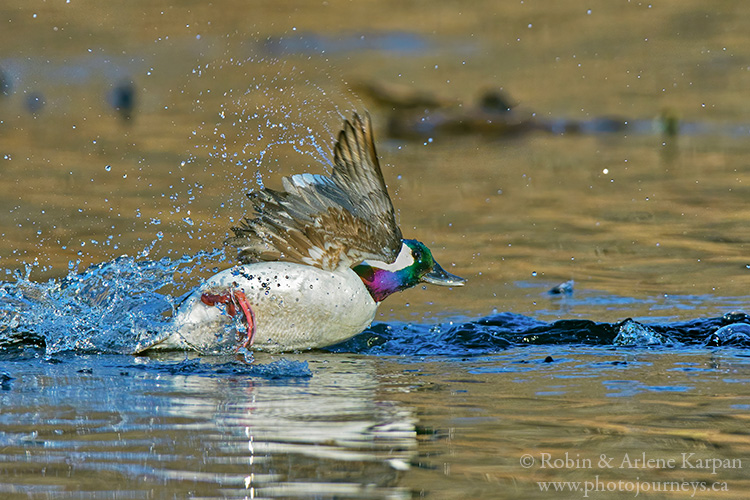
Choreographed moves – Red-necked grebes and their mating display
We find red-necked grebes primarily in the four western provinces and north as far as Alaska. They are fairly vocal during mating season, often making a loud “whinny-braying” call, so we often hear them before seeing them. They nest in sheltered lakeshores and wetlands, and usually make their nests from floating vegetation. Mating rituals involve both the male and female going through a complex array of postures and movements, such as stretching up their heads and necks.
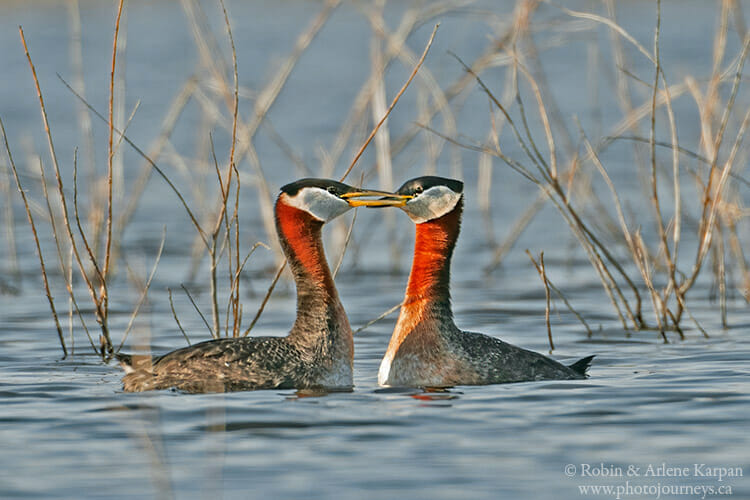
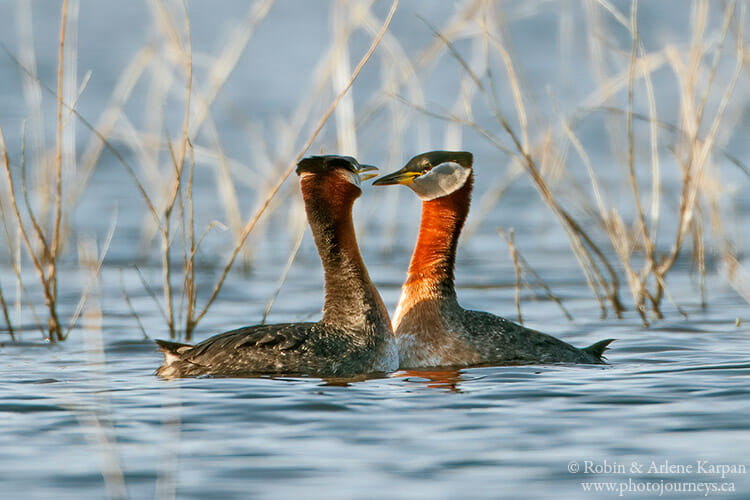
These and most other grebes tend to be reasonably tolerant of people if you don’t get too close. A challenge in photographing their mating display is that it often takes place in sheltered areas which might be hidden away among the vegetation. I got these shots from a floating blind in the water.
Dancing a Pirouette – American avocets
In breeding season, these elegant shorebirds occur mainly in the southern parts of the Canadian prairies and the US Great Plains states. The best places to find them, as well as other shorebirds, is along the edge of shallow lakes and wetlands with muddy shores. In southern Saskatchewan we like to go to places such as Chaplin Lake and around the Quill Lakes.
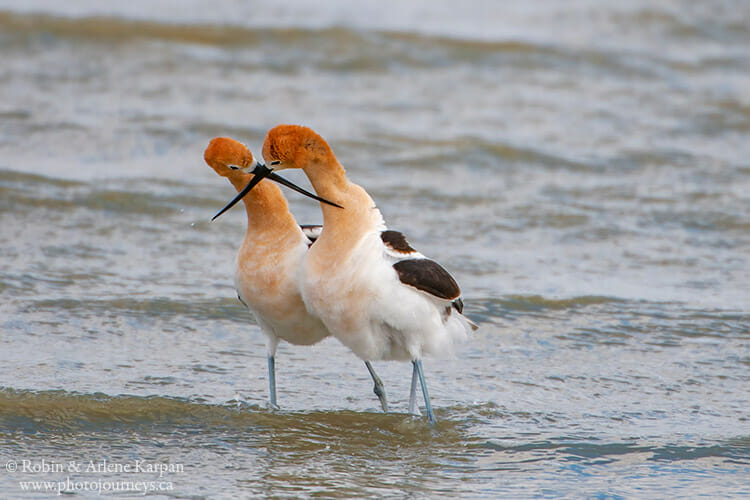
After a couple mates, they often do a quick circular pirouette dance, sometimes crossing bills while one wraps a wing around the other. The whole dance is over in a flash, so if you see an amorous couple, be ready with your finger on the shutter and use a fast shutter speed. The best way to get close enough to photograph is to find a wetland with avocets near a road and stay in your vehicle while shooting.
Looking sharp at the dance – Sharp-tailed grouse
This grassland bird breeds mainly in the southern half of the Canadian prairie provinces, and the northern US Great Plains states. It is the provincial bird of Saskatchewan. Most of the year, males and females alike look fairly drab. But come spring, all that changes. The males puff themselves up, inflating bright purple air sacs, their yellow eye-combs fluffed up like bushy blonde eyebrows. Wings are drooped down, heads are lowered, and the tail is pointed skyward. Rapid-fire foot stomping, audible a kilometre away on a calm morning, propels them back and forth, round and round, like a bunch of out of control wind-up toys. Females may gather around the edge to check out the guys and see who has the best dance moves.
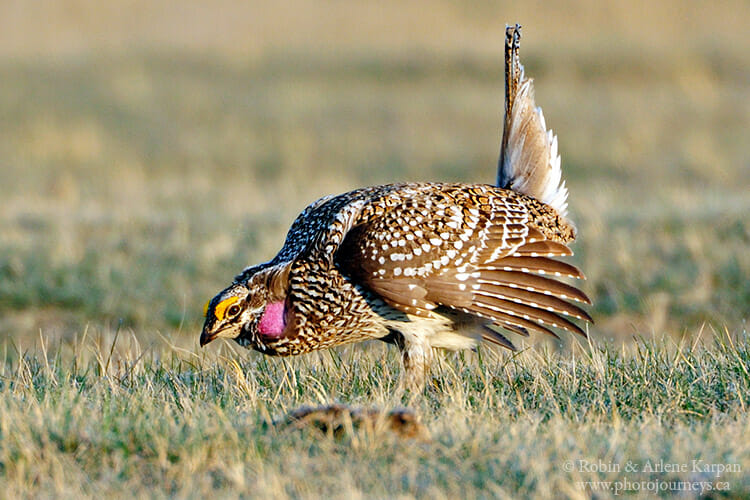
The ritual takes places on leks, or dancing grounds, that they have decided are ideal spots. It is often on a knoll in the grasslands. The leks are almost always found in undisturbed native prairie, such in pastures or in parks with native prairie.
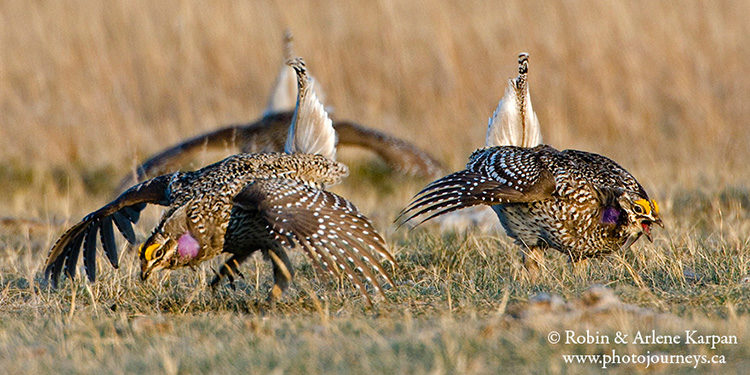
Bushland drummer boys – Ruffed grouse
Ruffed grouse occur in treed areas through much of Canada and the northern US states. In our area, we find them mainly in the aspen parklands. While they are fairly common, these well-camouflaged birds are often difficult to see. In mating season, we almost always hear them before seeing them.
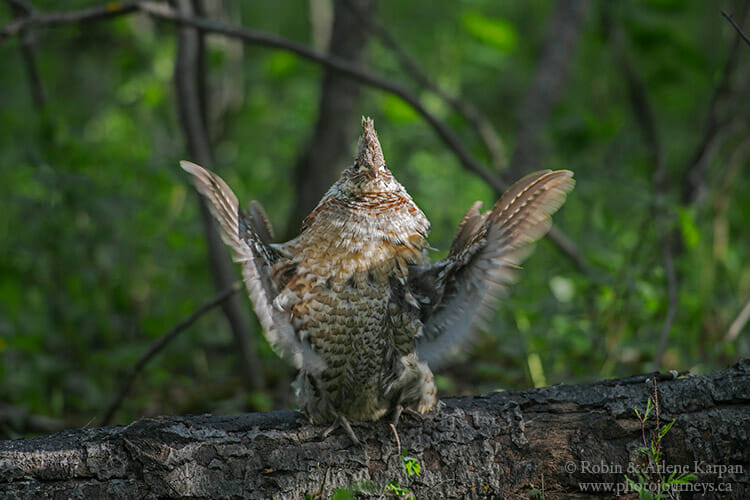
The male tries to find a mate and establish territory by drumming, a sound that we can often hear a kilometre or more away, usually early in the morning. The grouse stands on top of a fallen log, often deep into the forest, and beats his wings rapidly to make the sound that is sometimes compared to a motorboat. The challenge is finding the bird. They tend to be quite skittish, and will often disappear if they know someone is nearby. It’s necessary to approach slowly and quietly, while staying out of sight of the bird. To get close enough to photograph, it’s best to use a blind or at least stay well-hidden.
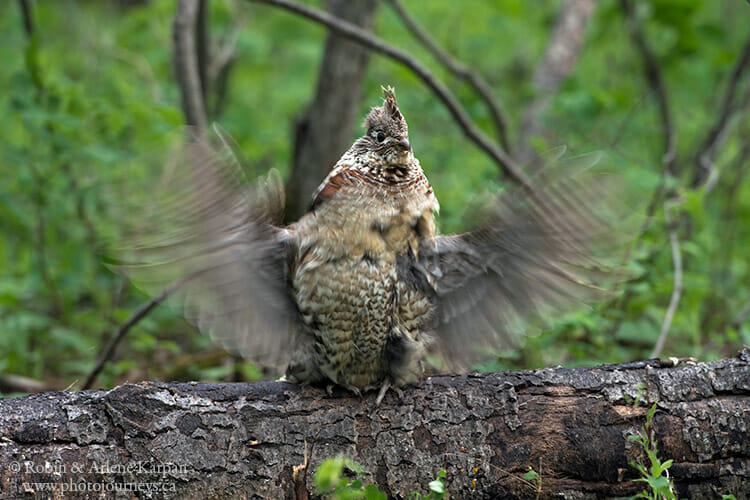
SUBSCRIBE to Photojourneys below
Feel free to PIN this post on Photographing Colorful Bird Spring Mating Displays
